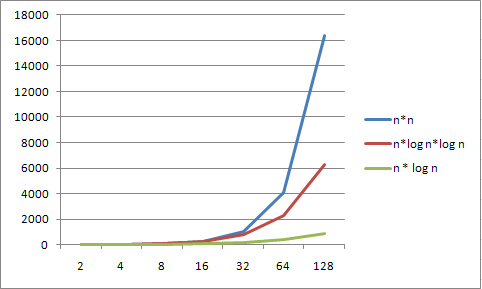Objectives
- Discuss algorithm complexity
- Explain what the "order of an algorithm" means
- Comapre and contrast different orders
| n | Alg A runtime | Alg B runtime |
|---|---|---|
| 10 | 100 | 33 |
| 100 | 10,000 | 664 |
| 1,000 | 1,000,000 | 9,966 |
| 10,000 | 100,000,000 | 132,877 |
| 100,000 | 10,000,000,000 | 1,660,964 |
| 1,000,000 | 1,000,000,000,000 | 19,931,569 |
